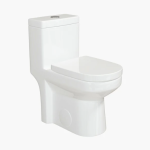A well-maintained lawn is a source of pride for many homeowners, but achieving and sustaining a healthy, green lawn can be challenging. Identifying common lawn problems is crucial for effective care. Some of the most frequent issues include poor soil quality, insufficient sunlight, and incorrect watering practices.
Compacted soil or soil lacking essential nutrients can result in stunted growth and a dull appearance. Lawns that are heavily shaded may not receive adequate sunlight for optimal photosynthesis, leading to weak grass growth. Improper watering, whether too much or too little, can cause problems such as root rot or drought stress, both of which significantly impact lawn health.
Thatch, a layer of dead grass and organic matter on the soil surface, is another common lawn issue. While a thin layer of thatch can be beneficial, excessive accumulation can prevent water, nutrients, and air from reaching grass roots. This can increase the lawn’s vulnerability to pests and diseases.
Lawn diseases like brown patch or dollar spot can appear as brown areas in an otherwise healthy lawn, indicating underlying problems that require attention. Understanding these common lawn issues enables homeowners to take preventive measures and address problems before they become more severe.
Dealing with Weeds and Unwanted Plants
Weeds are perhaps the most notorious adversaries in the quest for a pristine lawn. These opportunistic plants compete with grass for essential resources such as sunlight, water, and nutrients, often leading to a decline in lawn health. Identifying the types of weeds present is crucial for effective management; some may be annuals that can be easily pulled out, while others are perennials with deep root systems that require more aggressive control measures.
Hand-pulling can be effective for small infestations, but for larger areas, herbicides may be necessary. It is essential to choose the right type of herbicide—selective herbicides target specific weeds without harming the grass, while non-selective options kill all vegetation in their path. In addition to chemical treatments, cultural practices can also play a significant role in weed management.
Maintaining a healthy Zoysia Australis lawn through proper mowing, watering, and fertilization can create an environment less conducive to weed growth. For instance, mowing at the correct height encourages grass to grow thickly, which can shade out weeds and reduce their chances of establishing themselves. Moreover, overseeding with desirable grass varieties can help fill in bare spots where weeds might take hold.
By combining both chemical and cultural strategies, homeowners can effectively manage weeds and promote a healthier lawn ecosystem.
Managing Lawn Pests and Insects
Insects and pests can wreak havoc on a lawn if left unchecked, leading to unsightly damage and even death of grass plants. Common culprits include grubs, chinch bugs, and armyworms, each of which has its own unique feeding habits and life cycles. Grubs, for instance, are the larvae of beetles and feed on grass roots, often causing patches of dead grass that can be easily pulled up like a carpet.
Chinch bugs suck the sap from grass blades, leading to yellowing and wilting. Identifying these pests early is crucial; homeowners should regularly inspect their lawns for signs of infestation, such as irregular patches or increased bird activity, which may indicate that birds are feeding on grubs. Once pests have been identified, various management strategies can be employed.
Integrated Pest Management (IPM) is an effective approach that combines biological control methods with cultural practices and chemical treatments when necessary. For example, introducing beneficial insects like ladybugs or nematodes can help control pest populations naturally. Additionally, maintaining a healthy lawn through proper watering and fertilization can make grass more resilient to pest damage.
If chemical treatments are deemed necessary, it is vital to select products that are specifically designed for the targeted pest while being safe for the surrounding environment. By taking a comprehensive approach to pest management, homeowners can protect their lawns from damage while minimizing their ecological footprint.
Addressing Patchy or Thin Grass
A common frustration for many homeowners is dealing with patchy or thin areas in their lawns. These unsightly spots can arise from various factors such as poor soil conditions, inadequate watering practices, or even heavy foot traffic. To effectively address these issues, it is essential first to identify the underlying causes.
For instance, if certain areas of the lawn receive less sunlight due to shading from trees or structures, it may be necessary to consider alternative grass varieties that thrive in low-light conditions. Additionally, compacted soil can hinder root growth; aerating the lawn may help alleviate this issue by allowing air and nutrients to penetrate deeper into the soil. Once the causes have been identified, homeowners can take steps to rejuvenate their lawns.
Overseeding is one effective method for addressing thin areas; this involves spreading grass seed over existing turf to encourage new growth without disturbing the established lawn. It is crucial to choose a seed mix that matches the existing grass type for optimal results. Furthermore, ensuring proper watering practices—such as deep watering less frequently—can promote stronger root systems and healthier grass overall.
By taking a proactive approach to addressing patchy or thin grass, homeowners can restore their lawns to a lush and vibrant state.
Dealing with Fungal Diseases
Fungal diseases pose a significant threat to lawn health and can manifest in various forms, including brown patch, powdery mildew, and rust disease. These ailments often thrive in conditions of high humidity and poor air circulation, making certain lawns particularly susceptible during warm summer months or after heavy rainfall. Homeowners should be vigilant in monitoring their lawns for signs of fungal infections; symptoms may include discolored patches of grass or unusual growth patterns.
Early detection is key to managing these diseases effectively before they spread further. To combat fungal diseases, it is essential to adopt an integrated approach that includes cultural practices and targeted treatments. Improving air circulation by trimming overhanging branches or reducing lawn density through proper mowing techniques can help create an environment less conducive to fungal growth.
Additionally, ensuring proper watering practices—such as watering early in the morning rather than at night—can reduce moisture levels on grass blades and minimize disease risk. In cases where cultural methods are insufficient, fungicides may be necessary; however, it is crucial to select products specifically formulated for the type of fungus affecting your lawn. By combining preventive measures with appropriate treatments, homeowners can effectively manage fungal diseases and maintain a healthy lawn.
Tips for Proper Lawn Maintenance
Proper lawn maintenance is essential for achieving a vibrant and healthy landscape that enhances curb appeal and provides a welcoming outdoor space. One of the foundational aspects of lawn care is establishing a consistent mowing schedule; cutting grass at the appropriate height not only promotes healthy growth but also helps prevent weed establishment by shading out potential invaders. It is generally recommended to mow when the grass reaches about one-third taller than the desired height; this practice encourages deeper root growth while minimizing stress on the plants.
In addition to mowing, regular watering is crucial for maintaining lawn health. Homeowners should aim for deep watering sessions rather than frequent light sprinklings; this encourages roots to grow deeper into the soil where moisture is more readily available during dry spells. Fertilization also plays a vital role in sustaining lawn vitality; applying a balanced fertilizer at appropriate intervals throughout the growing season ensures that grass receives essential nutrients for robust growth.
Finally, seasonal tasks such as aeration and dethatching should not be overlooked; these practices help improve soil structure and promote better nutrient absorption while reducing competition from unwanted plants.
Choosing the Right Fertilizer and Soil Amendments
Selecting the right fertilizer and soil amendments is critical for nurturing a healthy lawn that thrives throughout the seasons. Understanding soil composition through testing can provide valuable insights into nutrient deficiencies or imbalances that may exist within your lawn’s ecosystem. Soil tests typically measure pH levels as well as macronutrients like nitrogen (N), phosphorus (P), and potassium (K).
Based on these results, homeowners can choose fertilizers tailored to their specific needs; for instance, a nitrogen-rich fertilizer may be ideal for promoting lush green growth during the spring months. In addition to traditional fertilizers, organic amendments such as compost or well-rotted manure can significantly enhance soil health over time by improving its structure and nutrient content. These amendments not only provide essential nutrients but also promote beneficial microbial activity within the soil ecosystem.
When applying fertilizers or amendments to new lawn in Australia, timing is crucial; early spring and fall are generally considered optimal periods for application as grasses are actively growing during these times. By carefully selecting fertilizers and soil amendments based on individual lawn needs and applying them at appropriate times throughout the year, homeowners can cultivate a thriving landscape that stands up against environmental stresses while remaining visually appealing year-round.















Leave a comment